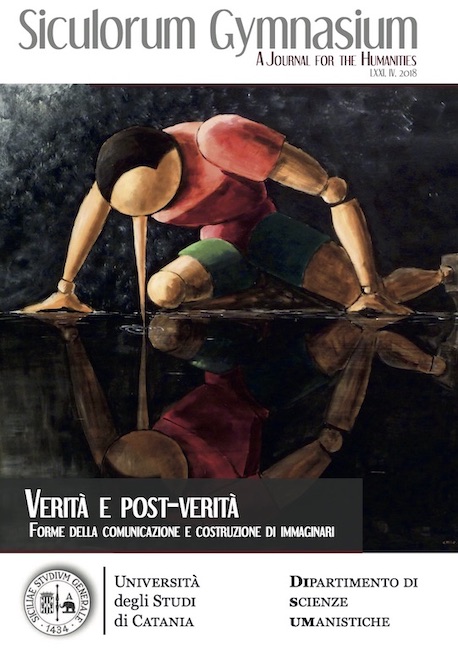
Quid est veritas? Ermeneutica e prospettivismo
in Siculorum Gymnasium. A Journal for the Humanities
Anno LXXI / n. IV – 2018 (ma uscito nell’ottobre 2019)
Verità e post-verità. Forme della comunicazione e costruzione di immaginari
Pagine 113-119
Indice
1 Verità
2 Gadamer
3 Disseminazioni
Abstract
Τί ἐστιν ἀλήθεια; Post-nietzschean civilization, and not just philosophy, is under the sign of Pilate’s question. However, perspectivism is not the legitimation of any affirmation, is not the so-called post-truth, but constitutes the awareness that every truth is plural. This is the heart of hermeneutics, the game between Gegenstand and Bedeutung. It is on this foundation that Heidegger and Gadamer have transformed hermeneutics from a methodology into an ontology that is rooted in temporality.
Incipit
Τί ἐστιν ἀλήθεια; «Che cos’è verità?» (Gv 18,38). Nietzsche riteneva che questa domanda di Pilato fosse l’unica parola del Nuovo Testamento ad avere valore, e che di quel libro fosse la critica più puntuale, il suo stesso annientamento ‒ «seine Kritik, seine Vernichtung selbst» (Der Antichrist, § 46). Si tratta, in effetti, di una domanda che è nello stesso tempo l’orizzonte della filosofia e il suo sorgere. Che cosa sia verità è infatti una delle tre questioni con le quali e attraversando le quali l’indagine filosofica definisce se stessa, il proprio oggetto, il proprio statuto. Le altre due domande riguardano l’essere e il tempo.





